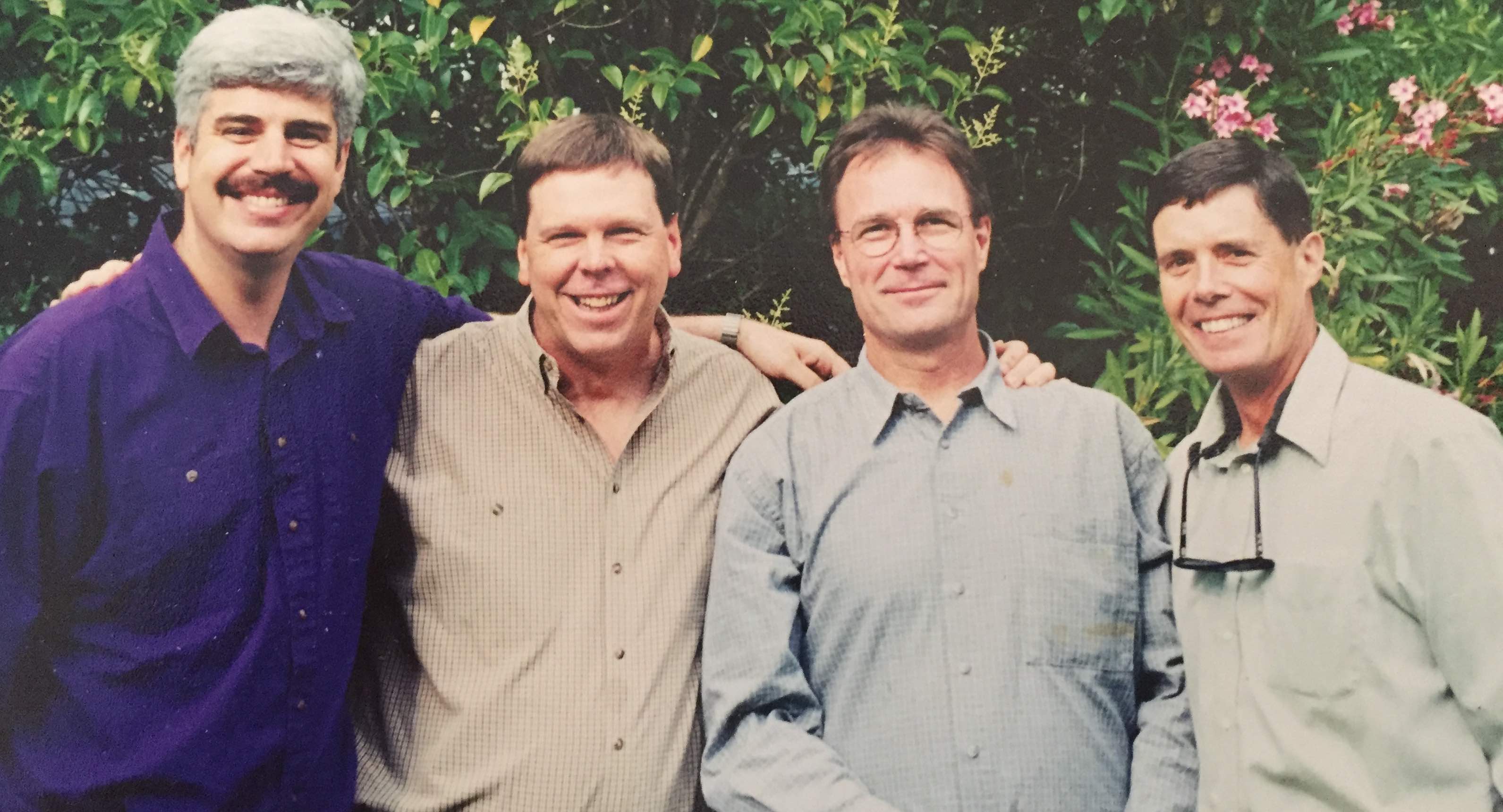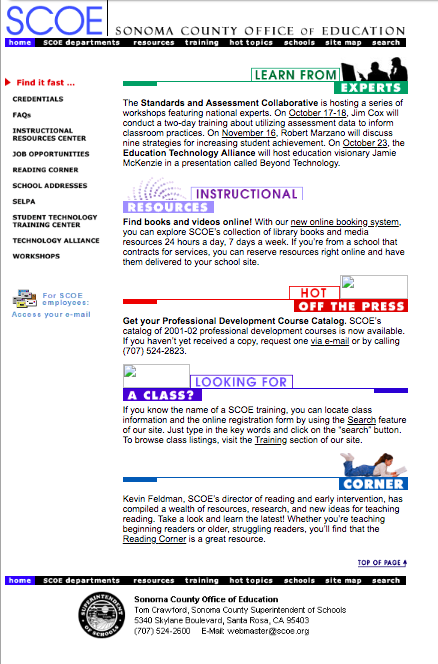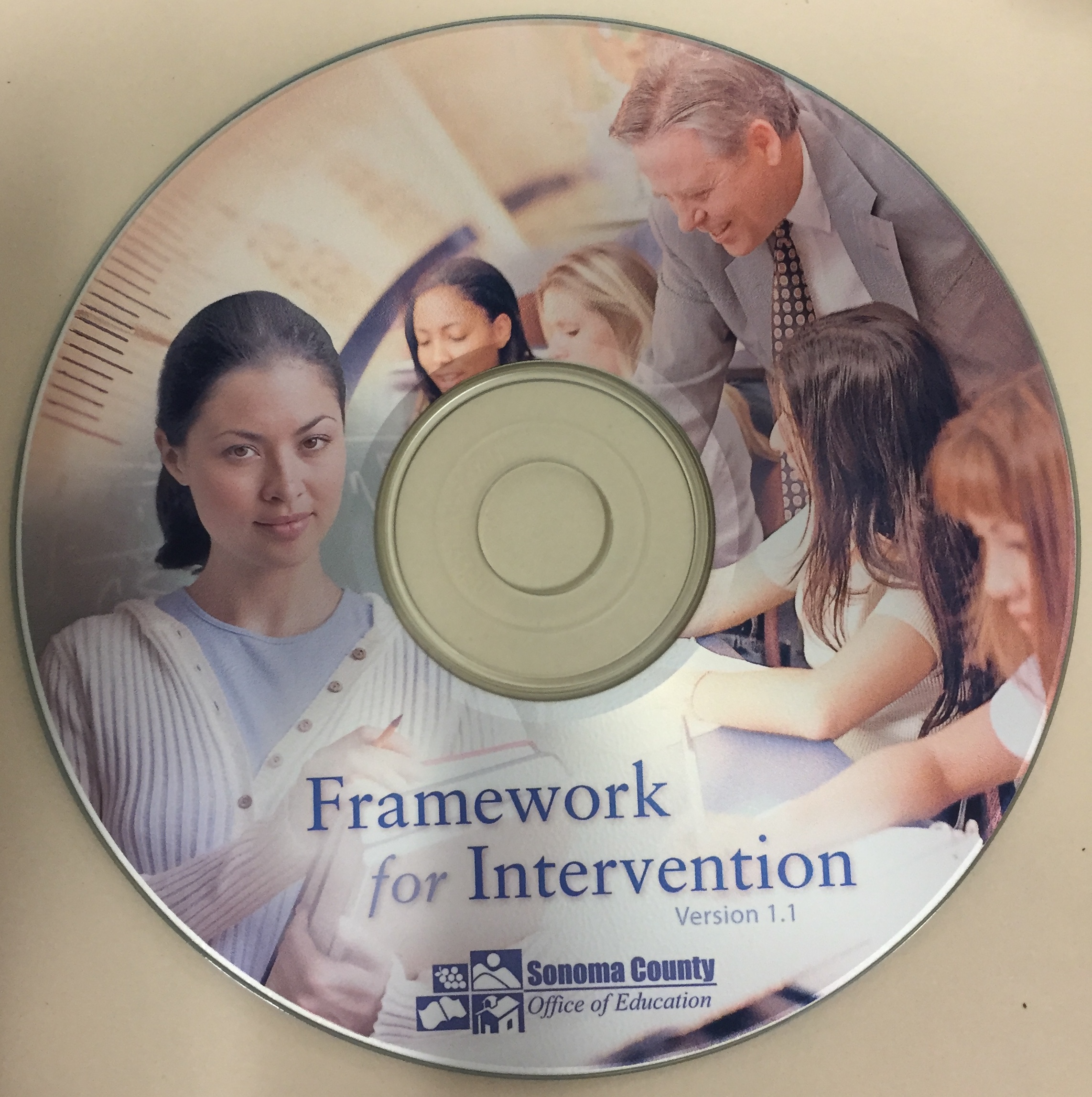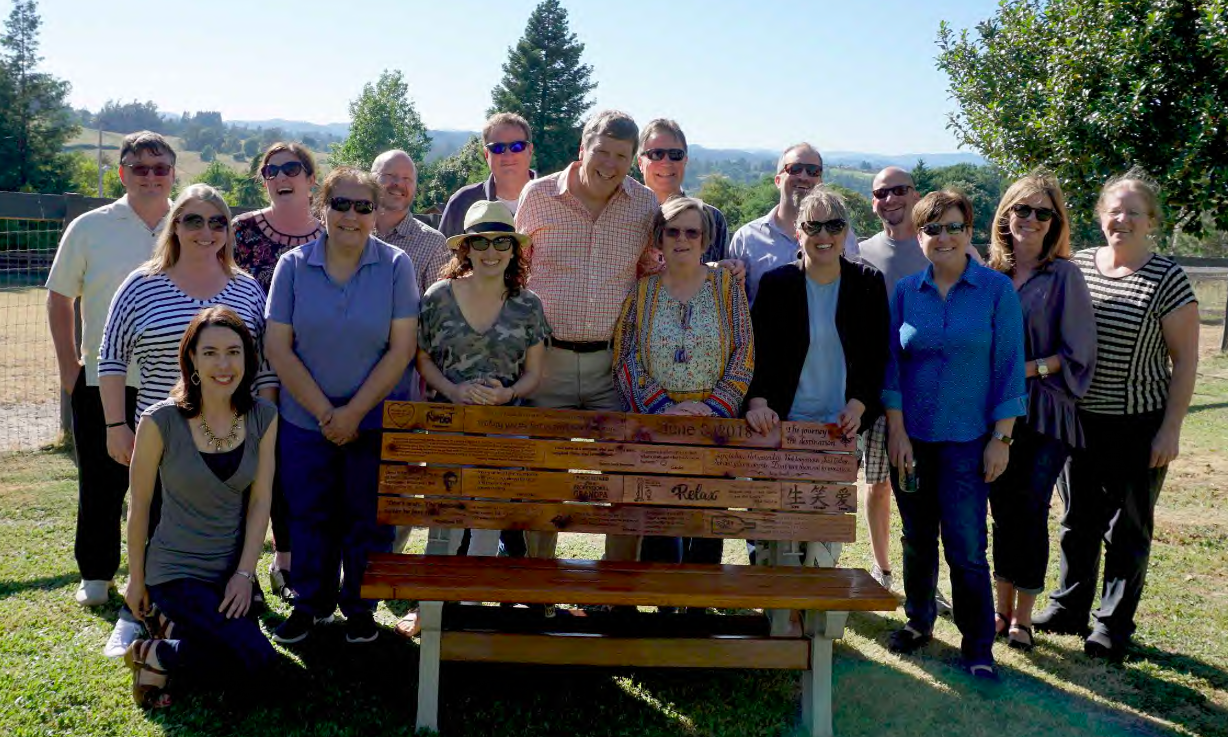Journey Reflections- 36 Years in Sonoma County Schools
Author: Rick Phelan
Published: 06.25.18
 I’ve had the good fortune of serving students and teachers in Sonoma County public schools for over three decades. This work has brought great meaning and satisfaction to my life. Looking to my future, I’m interested in exploring new areas of life and will be retiring from my current job as SCOE’s Director of Technology for Learning on June 29. This blog post contains reflections and highlights as I look back on the last 36 years.
I’ve had the good fortune of serving students and teachers in Sonoma County public schools for over three decades. This work has brought great meaning and satisfaction to my life. Looking to my future, I’m interested in exploring new areas of life and will be retiring from my current job as SCOE’s Director of Technology for Learning on June 29. This blog post contains reflections and highlights as I look back on the last 36 years.
My teaching career started in the Sonoma Valley Unified School District in August 1981. I remember driving up to the Sonoma Plaza minutes before an interview thinking, “What a great little community- I could thrive here!” At that time there were no more than two traffic signals within the city limits. I served for 15 years in Sonoma Valley working as a special day class teacher, resource specialist teacher, social studies teacher, summer school elementary teacher, evening adult school teacher, mentor teacher and district technology coordinator. I worked with many visionary and talented educators in Sonoma Valley who helped shape and guide me including: Robert Guerts, Rita Roberts, Ralph Hahn, Marian Rasmussen, Jane McDonough, Raymond Fredricks, Gary Moe and Louann Carlomagno.

Sonoma Valley High School- I served as a Resource Specialist Teacher here for 13 years
In January 1997, an opening became available in the Educational Support Services (ESS) Department at the Sonoma County Office of Education. I applied and was hired to help serve the 40 districts, 174 schools and 69,000 students in Sonoma County. I joined a team with two other education specialists, Patrick Laherty and John Schiller, working to help educators integrate technology in learning. Districts needed support in five areas:
- Planning & budgeting for technology acquisition
- Technology professional development
- Technical support
- Use of technology to complement student learning
- Applications of technology to support school operations such as attendance and student progress monitoring
One example of our work involved support for the internet. The internet was relatively new and part of our job in ESS was helping teachers and administrators figure out how to use elements such as email and the world wide web. We were switching from dial-up modems to having direct internet connections. Setting up computer networks for file sharing and internet access was a struggle for districts because of limited funding, proprietary computer networks and conflicting visions about the role of technology in education.
SCOE’s Business and ESS departments collaborated to promote a countywide K-12 plan to support district instructional programs and fiscal operations. In brief, SCOE Business Services offered initial funding to establish a wide area network in Sonoma County that would link district offices to SCOE. The network would provide a common electronic accounting system for all districts along with access to the internet for instruction. Districts needed to go the extra mile connecting each of their schools to the central office. Known as the Sonoma Schools Connect Consortium, ESS administered the wide area network and all the elements connecting school districts. Dan Exelby joined our ESS team at this time to help schools design, integrate and support schools with the wide area network.

Dan Exelby, Rick Phelan, John Schiller and Patrick Laherty- 2004
Patrick, Dan, John & I held professional learning activities in SCOE’s technology classroom which in now the ESS storeroom. Each of the classroom’s 25 workstations had a computer, laser disc player and 14 inch television monitor. One of our most popular activities of the time was a class called, “Technology Across the Curriculum.” This class involved groups of teachers coming to SCOE with teams of 2-4 students over a period of three days to learn about integrated thematic hands-on projects with technology. We’d involve the groups in selecting an area of inquiry, carry out digital research with CDs, laser disks, internet resources and print media from SCOE’s library. Projects would be assembled using multimedia programs such as HyperStudio and KidPix. The teams presented their projects after lunch on the third day. Members of the audience along SCOE specialists would critique projects offering commendations and suggestions for next steps.

Multimedia programs used in SCOE's Technology Classroom
During this period, Patrick Laherty setup a web server and created SCOE’s first website. We offered Hyper Text Markup Language (HTML) classes helping schools and districts develop a web presence. SCOE Communication Specialist Suzanne Gedney and John Schiller collaborated in the development, design and construction of SCOE's website. This iteration had the beginnings of what the SCOE website looks like today. I marvel at how the SCOE website continues to evolve with department information, resources, blogs and social media connections serving educators, parents, students and the community at large.

2003 SCOE webpage
As ESS entered into the 21st century, the California School Board was establishing consistent learning standards for public schools in English, mathematics and science. The California Standardized Testing and Reporting (STAR) test was soon to become an annual method for gauging academic progress. Two different accountability systems were just being introduced: California’s Academic Performance Index (aka API) and the US Department of Education’s Adequate Yearly Progress (aka AYP and No Child Left Behind).
Don Russell, the ESS Deputy Superintendent at the time, asked John Schiller and I to spearhead some of the “data work.” John and I developed expertise and experience collaborating with districts and other county offices looking at ways to support student learning using student data. A parallel to today’s Differentiated Assistance work, the entire ESS Department came together to create an electronic CD known as the ‘Framework for Intervention.’ This interactive resource helped districts understand data elements and plan instructional interventions to support learning for all students. The CD was popularly received by schools and districts in Sonoma County and across California. The work with state and local data initiated a focused examination of student outcomes, eliciting equity questions, identification of achievement gaps and consideration of strategies for meeting the needs of all students in schools.

Interactive guide to help schools plan & implement intervention systems created by ESS Department
During this same period, Curt Wheeling, a Sonoma County business entrepreneur came to SCOE and suggested we consider offering robotics programs in Sonoma County to help prepare students for jobs of the future. Curt was part of the Northbay Technology Roundtable and offered to ‘seed’ schools with Lego Mindstorms sets if we offered training for teachers and a held a challenge event for students in the Spring. This was the beginning of the Sonoma County Robotics Challenge which is now in its 16th year and has impacted over 4,000 Sonoma County students in grades 4-8.

Sonoma County Robotics Competition- a 'Sumo' event involving Lego Mindstorm RCX robots
A new area of work came together in 2006 when the California legislature become aware of school leadership shortages. Acting on this need, the legislature passed a bill called AB 75 to offer funding, instruction and training to develop school administrators. County Offices across the state were asked to setup structured programs that would provide administrative candidates with 160 hours of training related to:
- School culture & operations
- Teaching and learning curriculum
- Educational technology
I was asked to design and deliver the technology element for Sonoma County. Through the span of the next six years, over 150 Sonoma County administrators obtained their administrative services credentials through the AB 75 program. Today’s North Coast School of Education carries this work forward supporting the development of administrators along with teaching candidates who earn multiple subject credentials, single subject credentials and learning specialist credentials.
Through my 36 year journey in Sonoma County I’ve come to understand how vital SCOE is in supporting the varied needs among our districts and charter schools. I recognize a continuum of dedicated individuals from ESS over the years who have offered an array of services to support and improve Sonoma County student experiences. Their knowledge and expertise have been vital to the concept of ‘continuous improvement’ in our county school districts. I’m excited about the present work individuals and teams in the ESS Department are offering to schools:
- Elena Janred, Patricia Rendon- Pre School Teacher Coaching, Support & Development
- Brulene Zanutto - Early Literacy & TK Network
- Jenn Guerrero & Kelly Matteri- ELD & ELA work supporting development of speaking, reading, writing and listening among all students; their latest efforts promoting understanding of the ELPAC & making connections with daily instruction
- Josh Deis- Expanding educator views of mathematical thinking: processes & procedures, problem solving and communicating reasoning; promoting reflective practitioners through lesson study
- Anna Van Dordrecht- NGSS/Next Generation Science Standards helping educators understand three dimensional learning, activating the STEAM Symposium, science teacher networks, hands-on learning, & Maker Education connections
- Dan Blake, Matt O’Donnell, Anna Van Dordrecht & Casey Shea- championing Maker Education and efforts in SCOE’s Design Lab related to physical computing, digital fabrication and coding; reMake Summit
- Matt O’Donnell & Kelly Matteri- supporting the rollout of the new social studies standards
- Sarah Lundy & Kelly Matteri- helping schools understand Universal Design for Learning and how teachers can personalize learning
- Karen McGahey- educational leadership support & development; championing equity activities in our county
- Stephen Jackson, Chuck Wade & Jessica Progulske- College & Career Readiness; support for educators understanding career needs through community externships
- Chuck Wade, Jessica Progulske & Brulene Zanutto- helping schools address engagement & climate issues through restorative practices
- Dan Blake- leading dynamic student events such as the 5 Minute Film Festival and STEAM Symposium which offer insights into classroom learning, student thinking and collaboration
- Rachael Maves and Jennie Snyder- Differentiated Assistance and Local Control Accountability Planning

2018 ESS Team
Superintendent Herrington's leadership and vision for the future is compelling. He understands district needs, the evolving role of county offices, and the need for SCOE to be a dynamic organization that supports the success of all students. I believe SCOE will continue to be one of the first places districts & schools will go to find guidance and support for K-12 teaching and learning in the future!
Related Resources/Information
Rick's Phelan's New Email Contact Information- rphelan@mac.com
Blog: Technology for Learners

